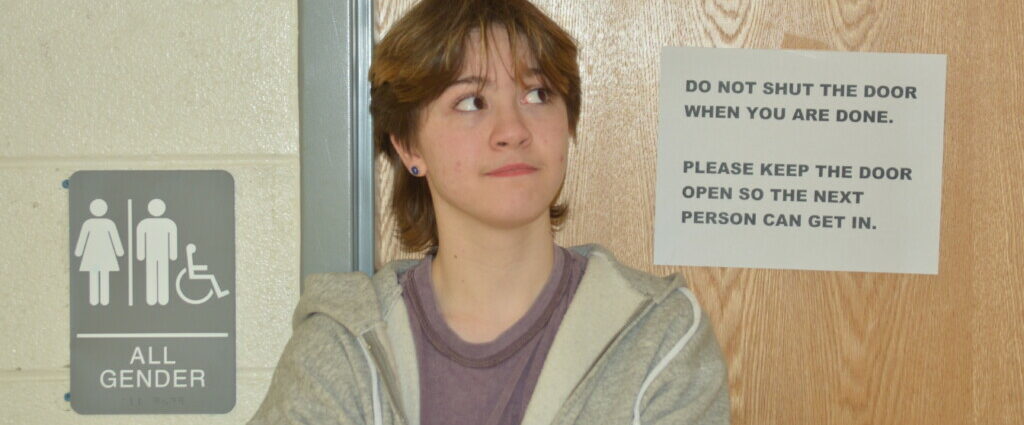*edited for length and clarity. Gender neutral bathrooms auto-locking, other issues concern club president.
Staff writer Reyna Berry: In our last issue, there was a story about a meeting between the Gender Sexuality Alliance and Principal Litz. As one of the sources, you reached out about sharing some more thoughts. One topic was, even though on paper there are three gender neutral bathrooms for students, in reality, it’s harder to find one. Do you want to speak to your experiences with that?
Zoe Mazur: So really, we only have one and it’s single-stall. There were two in C hall at the very beginning of the year, but one was switched back to “Faculty Only.” The thing is, faculty can use any bathroom in the school. I know that students tend to make bathrooms a lot messier and not as pleasant of an experience. But still.
And then also, there are gender neutral bathrooms in Student Services, and when some queer students realized that, they started trying to use them. But a lot of them were told students aren’t allowed to use those bathrooms. When I went I said I was part of the GSA and was allowed to use them, so I was allowed in. But this can create an uncomfortable situation for queer students because it feels like a question of, would they have to out themselves in order to use the bathroom?
Berry: And the gender neutral bathroom in C Hall sometimes auto-locks, which is one of the reasons you were talking to Litz, right?
Mazur: Yeah. If you close the door, and there’s no one inside, it’ll auto lock. So sometimes we have zero gender neutral bathrooms, and it’s just like it was before this year.
Berry: What are some reasons you think it’s important to have gender neutral bathrooms?
Mazur: I mean, for starters, what are queer students supposed to do, if they don’t feel comfortable or safe in the gendered bathrooms? Often those are unsafe environments. Other students can pose a threat, even if it’s hard to come to terms with that fact.
For me, specifically, going into a women’s bathroom, when I enter I can tell often the vibe kind of shifts. People glance over really quickly. They don’t seem like they feel entirely at ease with me there, and I am visibly uncomfortable. Using the women’s restroom, it feels like I’m lying.
But then going into the men’s restroom, I also feel like I’m lying. I feel like I’m putting on a show and pretending to be something I’m not. And I also feel really unsafe. I feel like I could be called a slur or something even if it’s completely empty … even if someone that I know and I trust is in there. Like even still. I wouldn’t feel entirely at ease.
And I know some students who have mentioned that they actually have faced genuine harm when using the men’s bathroom. And that’s been a problem that they’ve had to deal with.
Berry: How does having non-gendered bathrooms help?
Mazur: It really, really helps. I don’t feel stressed when I’m in there. I don’t feel like other people are going to be on edge either. Also, just their existence, the fact that they are there—even if you don’t use them, if you’re queer, just seeing them as you’re walking by makes you feel like, “Oh, Marshall actually cares. This is a good place for me to be and I feel safe in my learning because I know this school cares about me and makes an effort.”
Berry: Some administrators or teachers cite safety concerns with auto-locking single-stall bathroom doors. What are your comments on that?
Mazur: I think that’s valid. There’s safety concerns with students being in any bathrooms. I can see how with the single-stall ones, because there’s a lock and no gap under the door, it would make it difficult to get to the student. However, faculty does have keys to unlock it.
It’s a valid concern. But it’s being placed as a major issue when it’s just one nuance of the situation.

